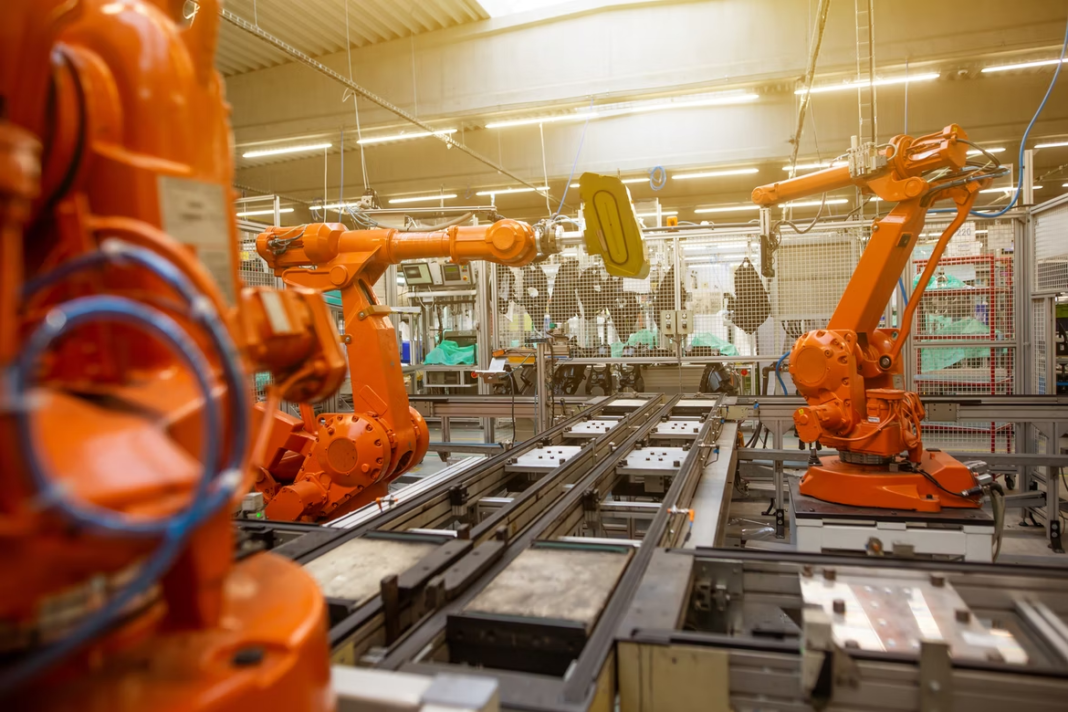Time is the most valuable commodity in the world. No one can create an additional amount of time for themselves. Creating more output in a given unit of time improves productivity and is also helpful in improving profitability. Production time is an important metric that determines the efficiency of any manufacturing process.
For example, consider that your company has to deliver 1,000 pieces of a toy for next Christmas. If you require 10 hours to produce 1,000 toys, you need to pay your employees for 10 hours. The machinery will also be running for 10 hours for which you will have to pay a proportionate amount for energy, maintenance, etc. If you can reduce the production time for manufacturing 1,000 toys to 8 hours, you save 20% on labor costs. You will also save a proportionate amount for energy, maintenance, and other operating expenses. You will be able to increase production capabilities.
As a production manager, you ought to find all avenues to save time in the manufacturing process. You can leverage the burgeoning field of manufacturing analytics to save time in the manufacturing process. Let us take a look at manufacturing analytics and how it will help you save time.
What Is Manufacturing Analytics?
Analytics is the field of discovering, interpreting and communicating, patterns and insights from data. Manufacturing analytics is performing analytics on data and information related to manufacturing processes. Analytics is performed on manufacturing data to optimize for different problems. These problems could be improving quality, reducing raw material usage, increasing efficiency, etc.
Earlier data collection was a manual process which relied on pen and paper to record and store data. With the advent of computers, data collected could be stored and analyzed using digital means. But the data was not a steady stream of information from machines and plants in real time. The data were discrete in nature. Due to this, any manufacturing analytics using such data had blindspots.
The Industrial Internet of Things (IIoT) is set to change this paradigm in data collection. Now every sensor and actuator in a plant has the ability to collect a steady stream of data and send the same over the internet. IIoT, coupled with 5G and cloud computing can deliver a steady stream of real time data for analysis. This large amount of data generated can also be stored in cloud computers to conduct manufacturing analytics.
Software solutions are used to collect, store, and track data for manufacturing analytics. The specific software to be used, depends on your requirements and constraints. Some ERP applications can perform manufacturing analytics. If you use such anERP, you don’t need another application. Manufacturing Execution Systems (MES), and Computerized Maintenance Management System (CMMS) can also be used for tracking manufacturing data and performing manufacturing analytics.
Benefits
Performing analytics on manufacturing data generates insights into manufacturing processes, inventory management practices, labor utilization, and a slew of other important plant functions. Manufacturing analytics has the potential to deliver a large number of advantages to plant operations. Some of the benefits delivered by manufacturing analytics are:
- Increase in manufacturing efficiency
- Improved inventory turnover
- Improved quality of output
- Improved process design
- Reduction of waste
- Reduction in manufacturing cost
- Better product designs
- Increased process automation
- Reduction in labor costs
- Time for manufacturing processes decreases
Manufacturing analytics can be leveraged to improve any production metric and can deliver more benefits than the ones mentioned in this short list. This article will focus on the time-saving benefits of manufacturing analytics.
Manufacturing Analytics: The Time Saver
Manufacturing process brings together raw materials, labor, and machines to produce goods required for end consumers. It is a complex process involving many stakeholders, from suppliers to customers. Any delay or bottleneck in the manufacturing process will affect operations that are upstream and downstream from the production facility. The time taken for production is also impacted by processes that are upstream and downstream from the production function.
Manufacturing analytics helps to assess the health and status of operations in the value chain to deliver effective utilization of production resources. Manufacturing analytics help to optimize various facets of the production process and save time. The following sections discuss some of the ways manufacturing analytics delivers time savings.
Supply optimization
The supply side of the manufacturing process is the sourcing of raw materials required for production or assembly. These materials are not readily available when an order is placed. The raw materials have to be sourced and transported to the manufacturing facility before it can be used in the production process. The time required to receive raw materials once the order is placed is called lead time.
When raw materials are ordered and there is a delay in delivering it before the existing inventory is exhausted, the production process halts. If the raw materials arrive early before it is required for production, you have to find avenues to store them till it is required. This will incur a cost to your organization. But if the raw materials arrive just in time for when they have to be used in the production process, the production will not be halted and the organization won’t suffer any inventory carrying cost.
Manufacturing analytics helps to determine the exact instance raw materials are required and the quantity required. The analytics package has the complete overview of the production process and can accurately estimate the material requirement. Analytics also helps to create orders at the right instances, optimizing for time, efficiency, and cost. This saves the production facility from facing any kind of delay due to unavailability of raw materials and saves time that could have been lost.
Optimization for Demand
The goods produced by production facilities have to be consumed by end customers. Your organization needs to deliver goods that consumers demand. On this side of the equation there is a lead time to produce goods to reach the hands of the customers. The production process has to anticipate future demand to produce an adequate quantity of products. When demand data is integrated with the manufacturing process with analytics, it helps to significantly save time in the manufacturing process.
With demand data integrated with manufacturing analytics, you can allocate less time to products that have less demand. Similarly, you can allot more production time for products with higher demand. In this manner, manufacturing analytics help to efficiently allocate production time. This saves time that could have been lost producing goods for which there are no buyers.
Process Optimization
The production of a final product is composed of multiple processes that follow one another. IIoT devices collect minute details regarding each microscopic process in the industrial plant. This vast amount of historical and live data can be used to analyze the efficiency of each process. This data can be used to simulate various combinations of process improvements. Such experiments can be done with computer modeling without disrupting regular plant operations. Successful simulations that have the potential to reduce production time can be implemented in the shop floor.
Design for Manufacturability
Manufacturing analytics can be used to identify bottlenecks and pain points in production processes. Analytics can also be leveraged to identify ways around such problems. Sometimes, the design of the product is the reason for manufacturing troubles. These problems increase the time required for production and also consume a high amount of resources. Insights and simulation results from manufacturing analytics can be used to alter the design of products to make it conducive for manufacturing. This will be done without hurting the functionality and production costs of the product. In fact, it will reduce production costs. When products designed for manufacturability are produced, it consume less time and resources.
Plant Layout Optimization
Manufacturing a product involves various processes performed at different workstations within a factory. Materials, goods, and labor have to be transported within the plant premises multiple times to complete the production of an item. Transportation takes time, fuel, and other resources. When the plant layout is suboptimal the resource consumption is high. Manufacturing analytics can be used to dissect manufacturing data for clues into inefficient plant layouts. Analytical models can be built to assess the efficiency of plant layout. If the model finds the existing layout to be subpar, simulations can be conducted to identify a suitable layout. Implementing the optimal plant layout reduces the time involved in transporting material within the factory and reduces the costs associated with it.
Maintenance
When maintenance is performed only when a fault or failure occurs, it is reactive maintenance. The machine experiences unscheduled downtime during reactive maintenance. This halts the production process. During reactive maintenance, labor and other equipment has to remain idle until the critical machine is back online after maintenance. The productive time lost can’t be recuperated. Production managers will be forced to make up for this time by other means.
Manufacturing analytics can integrate with predictive maintenance practices. In this practice, manufacturing data is regularly monitored to forecast potential faults and failures that could occur in the plant. This information could be used to schedule machines for maintenance without disrupting the production operation. This eliminates chances of time lost in the production process due to unscheduled downtimes.
Scheduling
Many scheduling activities are required for smooth operations in the plant. This includes batch scheduling, employee scheduling, inventory scheduling, scheduled maintenance, etc. When managers schedule, there will be human errors that are problematic. Different schedules might also clash since human schedulers don’t have complete visibility into the complete processes in the plant. Such problems force managers to go back and forth to fix flawed schedules. This causes a wastage of time and human capital. Manufacturing analytics, on the other hand, provides complete visibility and information on the production process. It can be leveraged to create schedules that don’t conflict. This saves precious time in the production process and also of plant managers.
Why Plant Managers Should Embrace Analytics
Manufacturing analytics is a boon to plant managers to run their operations. The principal advantage of using manufacturing analytics is the time saved throughout the production process. This saved time translates to reduced labor costs and operational costs. The saved time can also be used for additional production increasing the top line of the organization. Manufacturing analytics can also be leveraged to deliver process and plant improvements that reduce production time and cost. It is an indispensable tool in the hands of plant managers operating modern manufacturing facilities.
 About the Author
About the Author
Bryan Christiansen is the founder and CEO of Limble CMMS. Limble is a modern, easy-to-use mobile CMMS software that takes the stress and chaos out of maintenance by helping managers organize, automate, and streamline their maintenance operations.












































